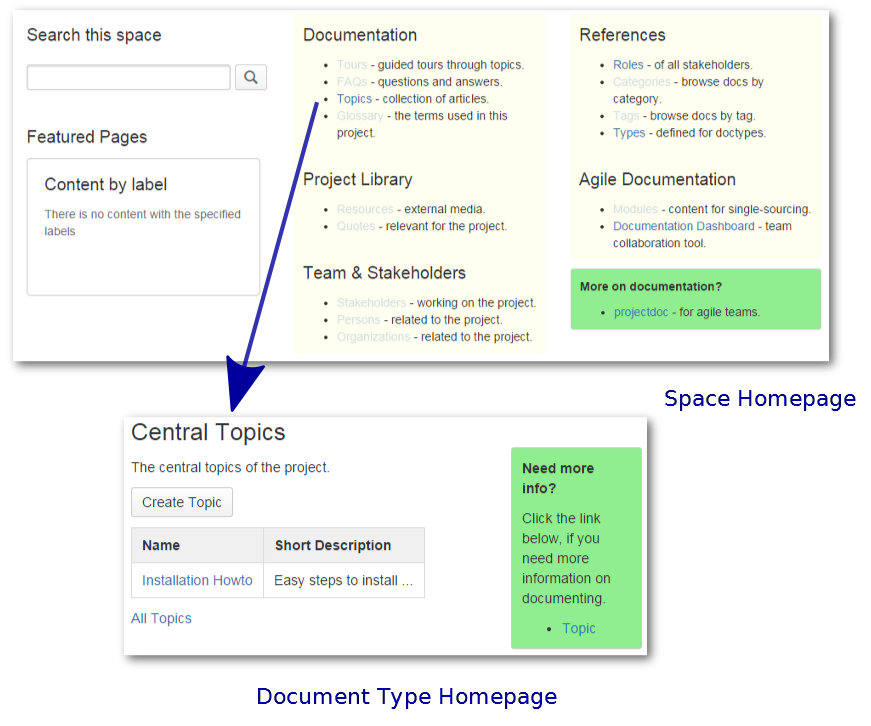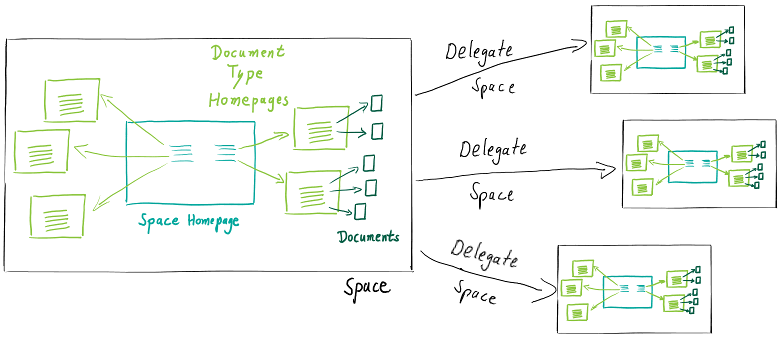...
| Document Properties Marker | |||||||||||||||||||||||||||||||||||||||||||||||||||||||||
|---|---|---|---|---|---|---|---|---|---|---|---|---|---|---|---|---|---|---|---|---|---|---|---|---|---|---|---|---|---|---|---|---|---|---|---|---|---|---|---|---|---|---|---|---|---|---|---|---|---|---|---|---|---|---|---|---|---|
| |||||||||||||||||||||||||||||||||||||||||||||||||||||||||
|
...
| Section | |||||
|---|---|---|---|---|---|
| |||||
If an author knows what information she wants to keep accessible for any stakeholder, found a template to support her with her task, she may still not know where to put it. Every wiki may have a different structure. On the one side this is a strength of wikis. They can evolve and are refactored to a new structure once the problem domain has been better understood. One the other side the individualism makes it hard for teams to create a comprehensible structure to live in - for readers and authors. If documents of similar content are stored at different locations, they are probably hard to find. If an author cannot derive the right location for her document, other stakeholder will probably have a hard time to find it. Projects of similar objectives may be served by similar structures quite well. Software development teams know that the actual location for a file is arbitrary, but it should be the same folder for the same types of files. Furthermore it would be useful if different projects would define the same locations. This way developers who are new to a team will find out easily where to look if they need to find Java or JavaScript source files or the folder where all the sources are compiled to during the build process. This is called a standard directory layout.
|
...
| Section | ||||
|---|---|---|---|---|
| ||||
Some documents are relevant to more than one space. If you have a large project with multiple large components you may want to have a space for each component you describe. Each component may share the same roles and topic types. So there is no need to have them copied around spaces. Instead have them stored in a collaboratively used delegate space.
There may be more than one delegate space. Delegates spaces are specified in an ordered list. Whenever an author sends a document to its doctype homepage, the document is stored to the immediate homespace page found in the delegate space hierarchy. Assume for instance that the current space has a delegate space with a homepage for roles, but has itself no such homepage. If a document of type 'Role' is sent to its homepage, then it will be stored on the role's homepage on the delegate space. |
...






